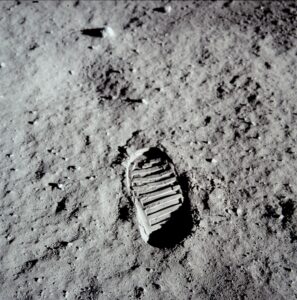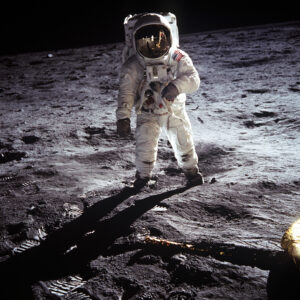The Incredible Secret I Discovered About the Camera That Went to the Moon
You won’t believe what I stumbled upon while researching vintage cameras last weekend. I was deep in a photography forum thread when someone mentioned “NASA’s moon cameras” – and just like that, I fell down one of the most fascinating rabbit holes of space history I’ve ever encountered.
My Shocking Discovery: The Hasselblad 500 EL’s Space Journey
I always thought the iconic moon landing photos were taken with some special NASA-engineered camera. How wrong I was! The truth is even more incredible.
In 1962, astronaut Walter Schirra actually walked into a local camera shop and personally bought a Hasselblad 500C camera for his Mercury mission. Can you imagine? One of the most famous cameras in history started with an astronaut’s personal purchase!
NASA engineers were so impressed by this consumer camera’s performance that they decided to pursue a formal relationship with Hasselblad, a Swedish camera manufacturer. This completely blew my mind – the most important photographs in human history weren’t captured on some top-secret government device but on modified consumer cameras!
The Transformation That Changed Photography Forever
As I dug deeper, I discovered that for the Apollo missions, NASA needed something that astronauts could operate while wearing those bulky space gloves. That’s when they turned to the Hasselblad 500 EL with its electric motor drive.
The modifications they made to create the “Hasselblad Data Camera” (HDC) were fascinating:
- They stripped all lubricants (which would evaporate in space’s vacuum)
- The camera body was painted silver to help regulate temperature
- A special glass plate was fitted with grid markings to help establish scale in photographs
- The standard leatherette covering was replaced with aluminum
- Created a massive 200-exposure film magazine
On July 20, 1969, when Neil Armstrong and Buzz Aldrin descended to the lunar surface during the Apollo 11 mission, they carried with them the modified Hasselblad 500 EL. The camera performed flawlessly, capturing over 340 color and black-and-white photographs that would become some of the most important images in human history and change how we see ourselves in the universe.
The iconic photograph of Buzz Aldrin standing on the lunar surface with the reflection of Neil Armstrong visible in his visor was taken with this very camera. This single image encapsulates the triumph of human ingenuity and exploration.
Here’s the part that really got me: to save weight for the return journey, the astronauts left most of the camera bodies ON THE MOON, bringing back only the film magazines! To this day, several Hasselblad cameras remain on the moon, silent witnesses to humanity’s greatest adventure. Talk about the world’s most exclusive camera display!
The Hasselblad 500 EL’s journey to the moon represents a perfect marriage of technical excellence and human achievement. These cameras didn’t just document history—they became part of it, cementing Hasselblad’s legacy as the creators of “the cameras that went to the moon.”

The Cameras Left Behind
In a fascinating footnote to this story, most of the Hasselblad cameras never returned to Earth. To conserve weight for the return journey, astronauts were instructed to leave the camera bodies on the lunar surface, bringing back only the precious film magazines. To this day, several Hasselblad cameras remain on the moon, silent witnesses to humanity’s greatest adventure.
The Hasselblad 500 EL’s journey to the moon represents a perfect marriage of technical excellence and human achievement. These cameras didn’t just document history—they became part of it, cementing Hasselblad’s legacy as the creators of “the cameras that went to the moon.”

The Hasselblad 500 CM: A Photographer’s Dream
While the 500 EL made history in space, its manual counterpart, the Hasselblad 500 CM (Camera Modified), became a legend in professional photography circles. Introduced in 1970 as an evolution of the 500C, the 500 CM embodied Hasselblad’s commitment to modular design and exceptional image quality.
Key Features of the Hasselblad 500 CM
The 500 CM boasted an impressive set of features that made it a favorite among professional photographers:
- Medium Format Excellence: The camera used 120/220 roll film in a 6×6 cm square format, producing negatives almost four times larger than 35mm cameras
- Interchangeable Components: The modular design allowed photographers to swap viewfinders, film backs, focusing screens, and lenses
- Leaf Shutter Lenses: Unlike focal plane shutters, the leaf shutters in Hasselblad lenses allowed flash synchronization at all shutter speeds
- Carl Zeiss Optics: Paired with legendary Zeiss lenses known for their exceptional sharpness, contrast, and color rendition
- Fully Mechanical Operation: No batteries required, making it reliable in any environment
- Removable Film Backs: Photographers could switch between different film types mid-roll
- Mirror Lock-Up: Minimized vibration for critical sharpness in long exposures
- Durable Construction: Built with aircraft-grade aluminum for decades of professional use
Perfect Use Cases for the 500 CM
The Hasselblad 500 CM excelled in various photographic disciplines:
Studio Photography
The camera’s precise control, medium format quality, and interchangeable backs made it ideal for commercial studio work. Fashion photographers appreciated the larger negatives that captured every detail of clothing textures and models’ features.
Portrait Photography
The square format encouraged unique compositions, while the exceptional detail and tonal range delivered portraits with a three-dimensional quality that smaller formats couldn’t match.
Landscape Photography
The camera’s reliable mechanics worked in extreme environments from deserts to mountains. The larger film size captured expansive scenes with remarkable detail from foreground to background.
Architectural Photography
The leaf shutter lenses minimized vibration, critical when photographing buildings with longer exposures. The interchangeable backs allowed photographers to shoot both color and black and white without carrying a second camera body.
Documentary Work
The camera’s durability and straightforward operation made it reliable for documentary photographers working in challenging conditions around the world.
The Hasselblad 500 CM’s legacy continues today, influencing modern digital medium format cameras and remaining sought after by film photographers who appreciate its mechanical perfection, optical excellence, and the distinctive look of medium format photography. Like its space-traveling sibling, the 500 CM represents the perfect fusion of precision engineering and creative possibility.
My New Appreciation for a Photography Legend
This journey of discovery has completely changed how I view those historic moon photos. What started as casual browsing turned into a deep appreciation for both the engineering marvel that documented mankind’s greatest journey and its Earth-bound counterpart that shaped professional photography for decades.
The Hasselblad legacy continues today, influencing modern digital medium format cameras while vintage models remain sought after by film enthusiasts. I never expected to be so captivated by camera history, but the story of the Hasselblad’s journey from Earth to the moon and back again is truly the perfect fusion of human ingenuity, adventure, and the power of photography to change how we see our world – and beyond.
